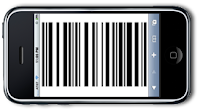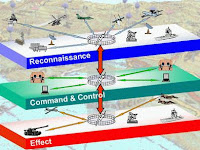
I can hear it now! Readers complaining that I should already know about this category of mobile applications, but I don't so I apologize in advance.
I want to be able to go to a grocery store (food store) and take out my iPhone, photograph the bar code label (UPC code) and have my GPS location uploaded to a website that will instantly provide me with all the discounts, coupons and rebates available for that product (UPC code) in that specific store location (GPS coordinate).
I want to take advantage of any savings that are available. I should not have to clip coupons from newspapers, file them and browse through different websites. I want the best price for the products on my shopping list for today only. Hummm, let me think about that. Perhaps if complementary products were also on sale that could prove useful. OK, let's add that feature and make it so it can be active or inactive in set-up.
It would also be useful to know how many of my products could be purchased for less, a mile down the road. Perhaps the total costs for my groceries at store A is $79.00, but 1 mile down the road those same products would only cost $63.00. I would like to know that. I may travel 1 mile to save $16.00. The radius of the search for savings could be configured in my mobile application. I want all stores within 1, 2, 3 or 10 miles.
Perhaps I could even save the UPC bar code scans from previous visits to the grocery store. These would, over time, make up my personal food lists. With a personal list of products and their associated UPC codes saved, I could quickly make a grocery list and request best prices from multiple stores within a designated area.
Once I have a list of all the best prices on my personal food list and their locations, I could request a best route to drive, plus a list of groceries I should buy at each store to maximize savings. I may have 4 stores within my designated search area. Each store has some food items that would maximize my savings. If I travel to each store, one at a time, I could save $34.00 on my list. If I went to only 2 stores, I could save $28.45.
OK, that is all good, but travel, time and fuel have a cost. I would like to know how much time it would take to drive to each store one at a time. Let me enter a time and fuel cost. That should be factored into the overall savings.
The result should be a very quick and simple mobile application that maximizes my savings in the most efficient manner possible. I would also need to show my electronic coupons to the cashier and manage the rebate process. Hummm...save that for another blog article.
OK readers what is the application called and where do I download it?
***********************************************
Author Kevin Benedict
Independent Mobile Strategy, Sales and Marketing Consultant
www.linkedin.com/in/kevinbenedict
http://mobileenterprisestrategies.blogspot.com/
***********************************************
I want to be able to go to a grocery store (food store) and take out my iPhone, photograph the bar code label (UPC code) and have my GPS location uploaded to a website that will instantly provide me with all the discounts, coupons and rebates available for that product (UPC code) in that specific store location (GPS coordinate).
I want to take advantage of any savings that are available. I should not have to clip coupons from newspapers, file them and browse through different websites. I want the best price for the products on my shopping list for today only. Hummm, let me think about that. Perhaps if complementary products were also on sale that could prove useful. OK, let's add that feature and make it so it can be active or inactive in set-up.
It would also be useful to know how many of my products could be purchased for less, a mile down the road. Perhaps the total costs for my groceries at store A is $79.00, but 1 mile down the road those same products would only cost $63.00. I would like to know that. I may travel 1 mile to save $16.00. The radius of the search for savings could be configured in my mobile application. I want all stores within 1, 2, 3 or 10 miles.
Perhaps I could even save the UPC bar code scans from previous visits to the grocery store. These would, over time, make up my personal food lists. With a personal list of products and their associated UPC codes saved, I could quickly make a grocery list and request best prices from multiple stores within a designated area.
Once I have a list of all the best prices on my personal food list and their locations, I could request a best route to drive, plus a list of groceries I should buy at each store to maximize savings. I may have 4 stores within my designated search area. Each store has some food items that would maximize my savings. If I travel to each store, one at a time, I could save $34.00 on my list. If I went to only 2 stores, I could save $28.45.
OK, that is all good, but travel, time and fuel have a cost. I would like to know how much time it would take to drive to each store one at a time. Let me enter a time and fuel cost. That should be factored into the overall savings.
The result should be a very quick and simple mobile application that maximizes my savings in the most efficient manner possible. I would also need to show my electronic coupons to the cashier and manage the rebate process. Hummm...save that for another blog article.
OK readers what is the application called and where do I download it?
***********************************************
Author Kevin Benedict
Independent Mobile Strategy, Sales and Marketing Consultant
www.linkedin.com/in/kevinbenedict
http://mobileenterprisestrategies.blogspot.com/
***********************************************

